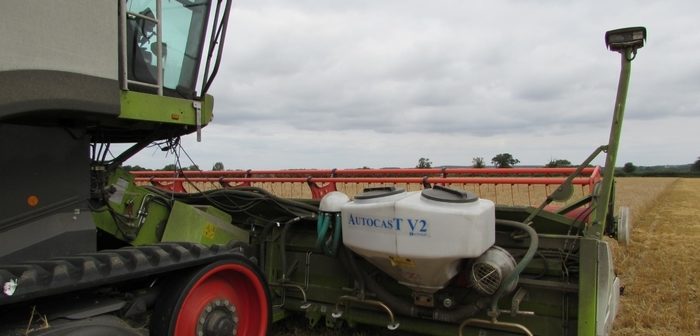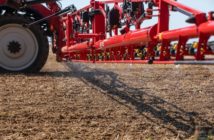With prices of £500/t being paid for many oilseed rape crops this year there is little doubt many arable farmers will be tempted to re-enter the OSR market, despite the dual threats of adverse weather and cabbage stem flee beetle (CSFB) that have accounted for poor yields and many lost crops in recent years.
Farmer Michael Gent alongside father John, of G L Gent and Son, a mixed enterprise farm with 500ha of combinable crops based at Oundle, have always grown OSR, achieving historical yields of around 3t/ha on predominantly light land. With a current rotation of 1 in 4 for rape, and with many years of rape growing experience, they view professional risk management as the only way to succeed with a crop that often seems to have a significant amount of luck attached to the end result.
“We currently farm just under 500ha of arable land, some of which is contract farmed, with rape, wheat and spring barley the key crops. Like many growers we’d historically subsoiled rape, not fully understanding the increased risk that soil disturbance can make to the threat of CSFB. In 2019, as our CSFB knowledge based increased, we moved to direct drilling rape via a 3m Weaving GD drill. However, despite its many agronomic benefits, direct drilling still represents an additional pass and carries the costs that come with that. It also requires a decent weather window with the right soil moisture levels for OSR, and there is always a significant risk that drilling could be delayed.
“Supported by advice from our agronomist, we’ve always believed in the benefits of establishing rape crops earlier on the theory that a strong, earlier germinated crop can grow away from flea beetle present in the early autumn and be better able to deal with harsher winter weather conditions than younger, late drilled crops. Based on that theory it was only a matter of time before we began looking at a new system of autocasting the rape as we combined” explains Michael.
“Earlier rape establishment via autocasting, or via any other alternative application method, can never be described as a complete agronomic fix and there will always be other potential challenges for rape crops through the season.
“But, for those farmers looking to cut their establishment costs for rape, better protect their soil by reducing crop passes and who are considering longer term business goals such as improved sustainability and soil health then autocasting is a low cost, zero till, zero carbon application system that creates a micro-climate beneath the chopped straw where newly germinated rape plants can flourish. Autocasting also helps to conserve soil moisture, critical to successful rape establishment” he adds.
“Having made the decision to autocast we invested in an Autocast V2 applicator, a broadcasting system from Techneat Engineering that can be used for both oilseed rape and cover crops, which we mounted on the header of our Claas Vario 660 combine harvester.
“The key strengths of the Autocast V2 are that it’s simple to operate, quick to set up and easy to calibrate. The rapeseed is metered into an air-stream that is then distributed to outlets spaced equally along the full width of the combine header. A dual hopper system enables us to place rapeseed with a companion crop and slug pellets beneath the chopped straw as we combine, establishing both the new rape crop and the cover crop as early as possible.
“Using the Autocast V2 for the first time this year has enabled us to conservatively save £50-£60/ha on the costs of our rape establishment – and, given the considerable upfront investment in seed and inputs on OSR, any reduction in the overall production cost of the crop has to be a bonus given the current financial risks linked to growing rape. Risk mitigation is especially important for our business, given that most of our lighter land has a yield potential of around 3t/ha for oilseed rape. Low-cost establishment combined with use of farm-saved seed, where possible, have both had a positive impact on net margins.
“We farm a lot of spring cropping within our current rotation. So, when we’re able to combine both good financial returns on winter cover crops with low-input spring cereals, it helps to create a healthy overall profit margin for both our business and for our contract farming customers.
“However, the benefits of sowing a cover crop in the rotation aren’t just purely financial ones. They are also important as we continually strive to improve our soil health linked to an anticipated move next January into a higher tier Higher Level Stewardship (HLS) scheme. Our long-term intention is to trial a number of different cover crops within the rotation including phacelia, vetch, black oats, mustard, berseem clover and buckwheat to evaluate what works best for both our soil and crop yields over the next 5 years” concludes Michael.




